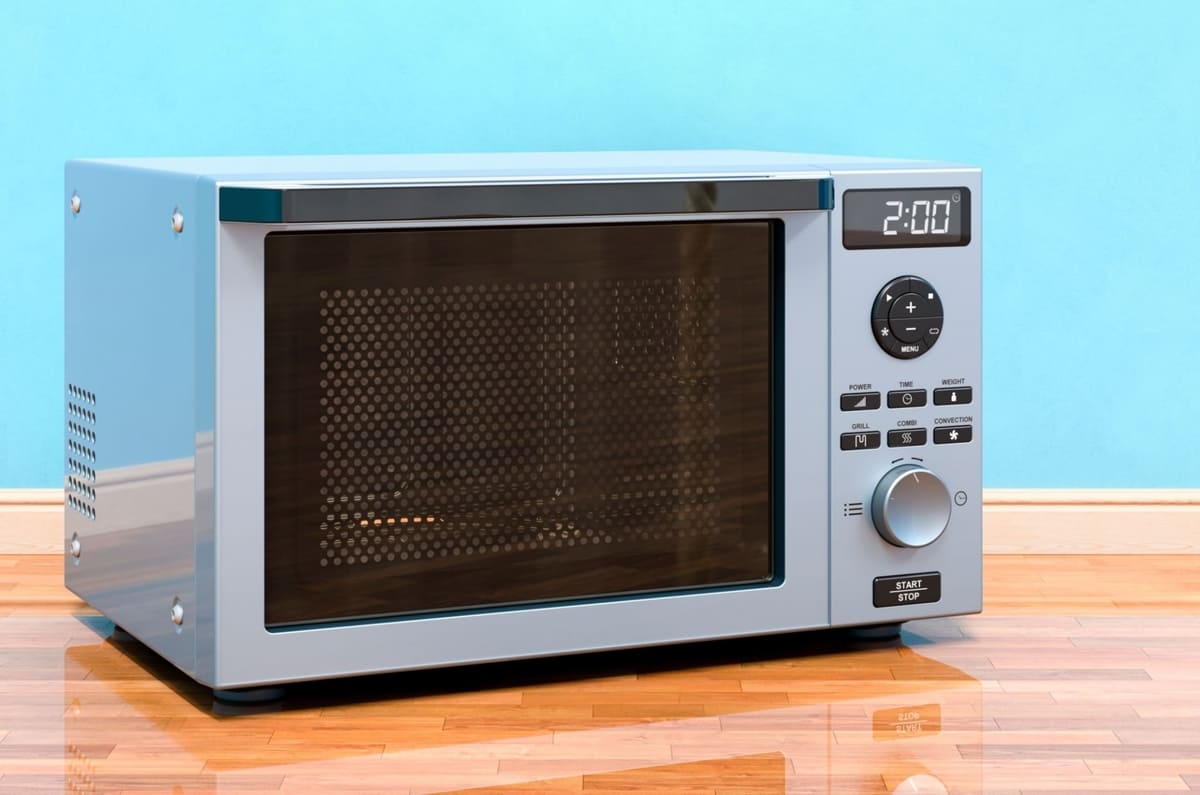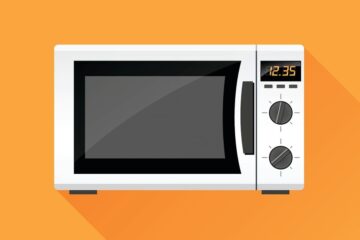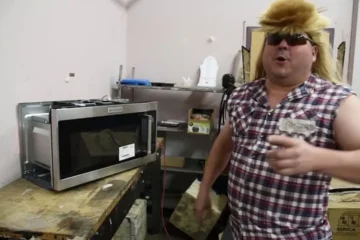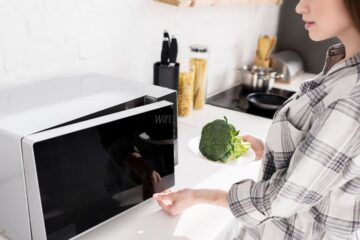Plastic wrap is a common household item that we use daily to store and cover our food. However, not all plastic wrap is created equal. Many people are unsure whether or not it is safe to use Kirkland plastic wrap in the microwave. In this article, we will explore the science behind plastic wrap and its microwave safety to answer the question: is Kirkland plastic wrap microwave safe?
Understanding Plastic Wrap
What is plastic wrap made of?
Plastic wrap is a thin, transparent film made from a variety of materials, including PVC, LDPE, HDPE, and PVDC. These materials are known for their flexibility, stretchability, and durability, making them ideal for wrapping and covering food items.
Types of plastic wrap
There are several types of plastic wrap available in the market, including cling wrap, shrink wrap, and stretch wrap. Each type has a specific purpose and is made of different materials, but they all share the same basic properties of being thin, flexible, and transparent.
Differences between plastic wrap and other materials
Plastic wrap is different from other wrapping materials, such as aluminum foil or parchment paper, as it is specifically designed to create an airtight seal around food items. This makes it an ideal choice for preserving the freshness and flavor of food.
What makes plastic wrap microwave-safe?
Microwave-safe plastic wrap is designed to withstand the heat generated by microwaves without melting, deforming, or releasing harmful chemicals. This is achieved by using materials that are heat-resistant and free of chemicals that could potentially leach into the food.
Microwave-Safe Plastic Wrap
Definition of microwave-safe plastic wrap
Microwave-safe plastic wrap is specifically designed to be used in the microwave without posing a risk to food safety or the microwave itself. This type of plastic wrap is labeled as “microwave-safe” and can be identified by the appropriate symbol on the packaging.
How it works
Microwave-safe plastic wrap is made of materials that are heat-resistant and do not contain harmful chemicals that could leach into the food. This allows the plastic wrap to withstand the heat generated by the microwave without melting or deforming.
Standards for microwave-safe plastic wrap
The U.S. Food and Drug Administration (FDA) sets standards for microwave-safe plastic wrap to ensure that it is safe for use in the microwave. These standards include guidelines for the amount of heat the plastic wrap can withstand, as well as limits on the amount of chemicals that can leach into the food.
Is Kirkland Plastic Wrap Microwave-Safe?
Overview of Kirkland plastic wrap
Kirkland plastic wrap is a popular brand of plastic wrap that is widely available in many stores. It is made from polyethylene, a type of plastic known for its durability and flexibility.
Can it be used in the microwave?
Kirkland plastic wrap is not labeled as microwave-safe, which means that it should not be used in the microwave. Using non-microwave-safe plastic wrap in the microwave can pose a risk to food safety and damage the microwave.
How to identify if Kirkland plastic wrap is microwave-safe?
To determine if Kirkland plastic wrap is microwave-safe, look for the microwave-safe symbol on the packaging. If the symbol is not present, it is best to assume that the plastic wrap is not safe for use in the microwave.
Contacting the manufacturer
If you are unsure about the microwave safety of Kirkland plastic wrap, you can contact the manufacturer for more information. They may be able to provide you with additional details about the materials used in the plastic wrap and whether or not it is safe for use in the microwave.
Potential Risks of Using Non-Microwave-Safe Plastic Wrap
While using plastic wrap in the microwave can be convenient, it is essential to note that not all types of plastic wrap are safe to use in the microwave. Using non-microwave-safe plastic wrap can pose potential risks and hazards, which could have severe consequences.
Release of Harmful Chemicals
Non-microwave-safe plastic wrap can release harmful chemicals into your food when heated in the microwave. These chemicals can pose a significant health risk, causing adverse effects on your body. One of the most common chemicals released by non-microwave-safe plastic wrap is bisphenol A (BPA). BPA has been linked to various health problems, including reproductive issues, diabetes, and cancer.
Melting and Potential Hazards
Another potential risk of using non-microwave-safe plastic wrap is that it can melt in the microwave, resulting in a mess and potentially causing harm. Melted plastic can drip onto the food, causing it to become contaminated, and the hot melted plastic can cause burns or other injuries if it comes into contact with your skin.
Damaging the Microwave
Using non-microwave-safe plastic wrap can also damage your microwave. When heated in the microwave, the plastic can melt and stick to the interior of the microwave, causing significant damage that may not be repairable.
To avoid these potential risks, it is essential to use microwave-safe plastic wrap or consider using other safe alternatives.
Safe Alternatives to Kirkland Plastic Wrap
If you are looking for a safe alternative to Kirkland plastic wrap, there are various eco-friendly, biodegradable, and reusable options available in the market. Here are some of the alternatives you can consider:
Eco-Friendly Options
Eco-friendly options include plastic wraps made from sustainable and renewable materials such as beeswax, cotton, and bamboo. These options are usually reusable and can be washed and reused, making them a great alternative to traditional plastic wrap.
Biodegradable Options
Biodegradable options are made from materials that can be broken down by bacteria or other living organisms, leaving no harmful residues behind. These options are environmentally friendly and can be composted after use.
Reusable Options
Reusable options, such as silicone food wraps, are durable and can be used multiple times, reducing waste and the need for single-use plastic. These wraps are safe to use in the microwave and can be washed and reused.
Tips for Using Plastic Wrap in the Microwave
If you decide to use plastic wrap in the microwave, there are several tips to keep in mind to ensure safe use.
Dos and Don’ts of Using Plastic Wrap in the Microwave
Here are some dos and don’ts to keep in mind when using plastic wrap in the microwave:
Do:
- Use microwave-safe plastic wrap.
- Leave a small vent in the plastic wrap to release steam.
- Use a microwave-safe dish to heat the food.
- Remove the plastic wrap carefully to avoid steam burns.
Don’t:
- Use non-microwave-safe plastic wrap.
- Use plastic wrap that touches the food.
- Use plastic wrap that is wrinkled or folded.
- Reuse plastic wrap that has been previously used to cover other food.
Common Mistakes to Avoid
Here are some common mistakes to avoid when using plastic wrap in the microwave:
- Using plastic wrap that is not microwave-safe
- Using plastic wrap that touches the food
- Using plastic wrap that is wrinkled or folded
- Reusing plastic wrap that has been previously used to cover other food
- Not leaving a vent in the plastic wrap to release steam
- Using plastic wrap for too long in the microwave
- Not using a microwave-safe dish
What Do the Experts Say?
When it comes to using plastic wrap in the microwave, experts agree that it’s important to use the right kind of plastic wrap to avoid potential risks. The most crucial thing to keep in mind is to use microwave-safe plastic wrap or a safe alternative option.
Opinions of Experts on Using Plastic Wrap in the Microwave
Many experts suggest avoiding plastic wrap altogether when it comes to heating food in the microwave. Dr. Rolf Halden, a professor at Arizona State University’s Biodesign Institute, warns against the use of plastic wrap in the microwave due to the potential risks associated with plastic chemicals leaching into the food.
On the other hand, some experts believe that microwave-safe plastic wrap is perfectly safe to use as long as it is used correctly. Dr. Marisa Weiss, a breast oncologist and founder of Breastcancer.org, suggests using plastic wrap that is labeled as “microwave-safe” or “safe for microwave use” to minimize potential risks.
Scientific Studies on the Topic
Scientific studies have also been conducted on the topic of using plastic wrap in the microwave. One study published in the Journal of Agricultural and Food Chemistry found that certain chemicals used in plastic wrap, such as bisphenol A (BPA) and phthalates, can leach into food when heated in the microwave. The study recommended using alternatives such as glass or ceramic containers.
Another study published in the journal Food Additives and Contaminants found that heating certain types of plastic wrap in the microwave can release harmful chemicals such as estrogenic compounds and phthalates. The study recommended using plastic wrap labeled as microwave-safe to minimize the risks.
Official Recommendations
The U.S. Food and Drug Administration (FDA) recommends using only plastic wrap labeled as microwave-safe when heating food in the microwave. They also advise against using plastic containers that are not intended for microwave use, as they can warp or melt and release harmful chemicals.
The European Food Safety Authority (EFSA) also advises against using plastic wrap in the microwave, particularly when it comes to fatty foods. They recommend using alternatives such as glass or ceramic containers.
Conclusion
In conclusion, while there are potential risks associated with using non-microwave-safe plastic wrap in the microwave, using microwave-safe plastic wrap or alternative options can be a safe way to heat food. It’s essential to read labels carefully and follow the dos and don’ts of using plastic wrap in the microwave to minimize any potential risks. Additionally, it’s always a good idea to consult with experts or official recommendations to make informed decisions about using plastic wrap in the microwave.




